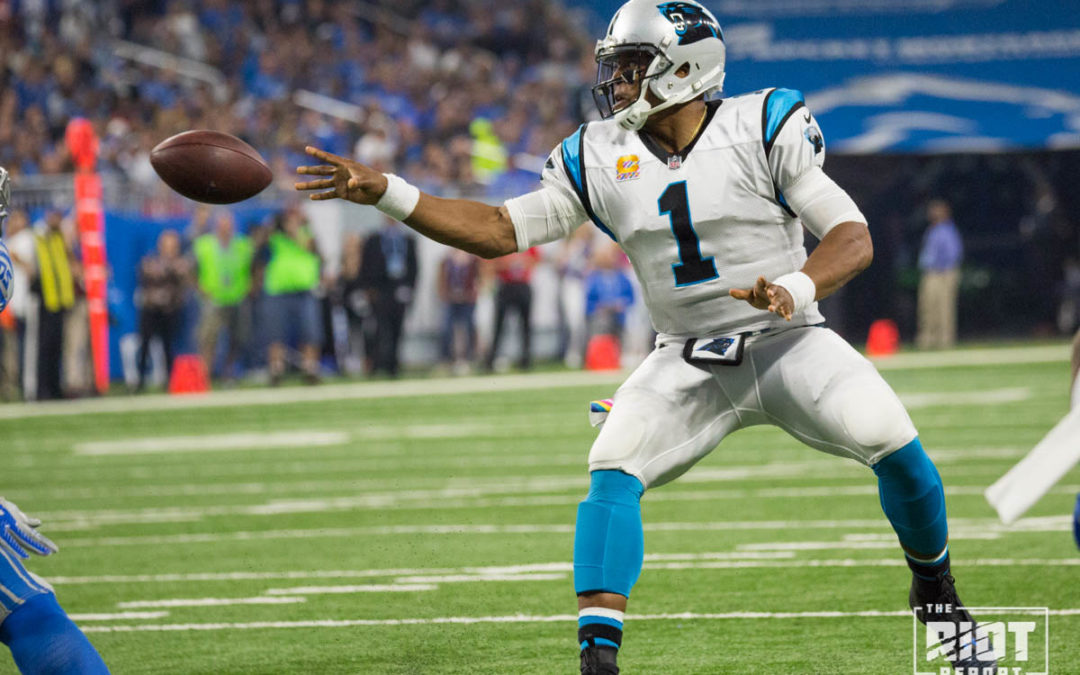The Triple Option
At its heart, the triple option is a read option with a pitch option added on the read side of the field. If the edge defender hesitates, the ball is given to the running back on the first read:
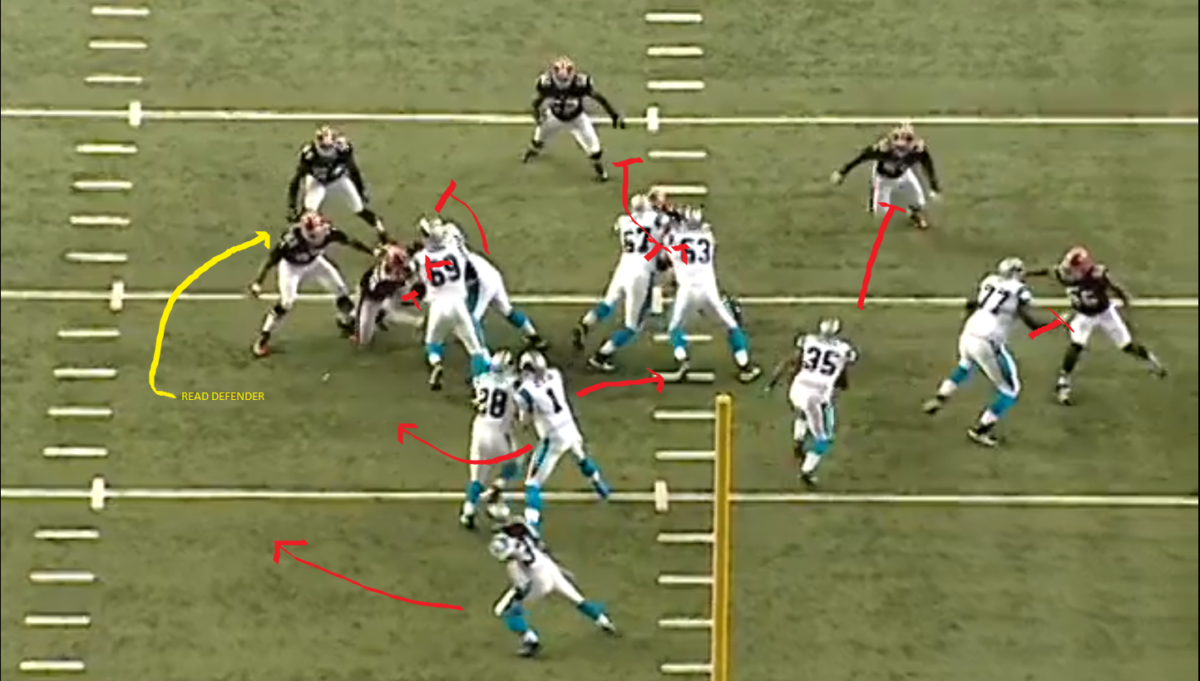
On this occasion, the read defender waits on the outside option and so Newton is able to simply hand the ball to Stewart with running lanes on either side of the central double-team block. On the following play, however, the read defender looks to crash the inside handoff:
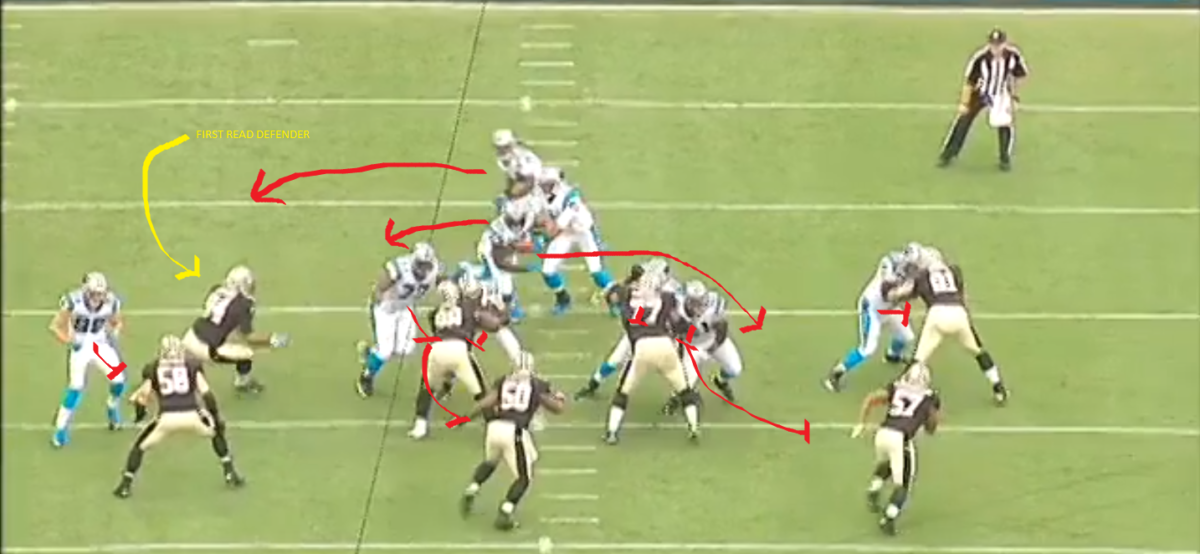
With the read defender looking to crash inside, Newton then keeps the ball and progresses to the second read. It should again be noted how all the blocks work in one direction, with body control being preferable to power. This also makes it easier for the offensive linemen, for as long as their defender is on the opposite side of them to the read, they are able to be effective. Typically, the second read is the read-side safety, as can be seen in the next image:
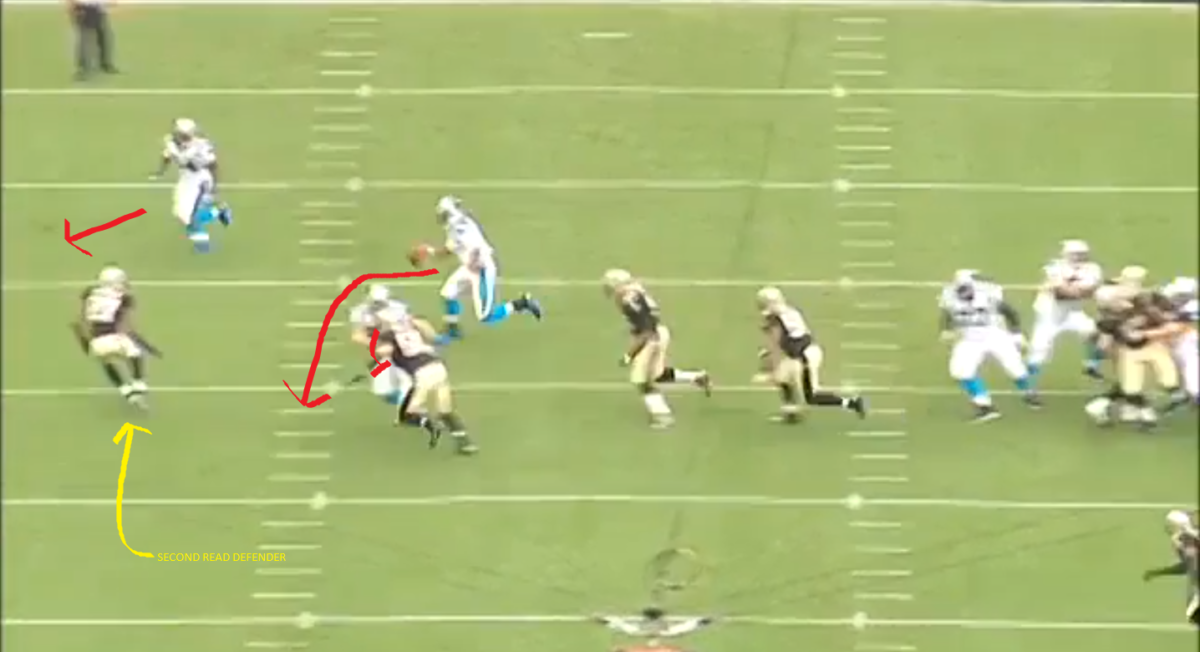
With the second read defender fading towards Williams, Newton is able to fake the pitch to freeze him before keeping the ball and turning upfield. Olsen here is able to secure the crucial block to maintain outside contain and allowing for the Newton keeper.
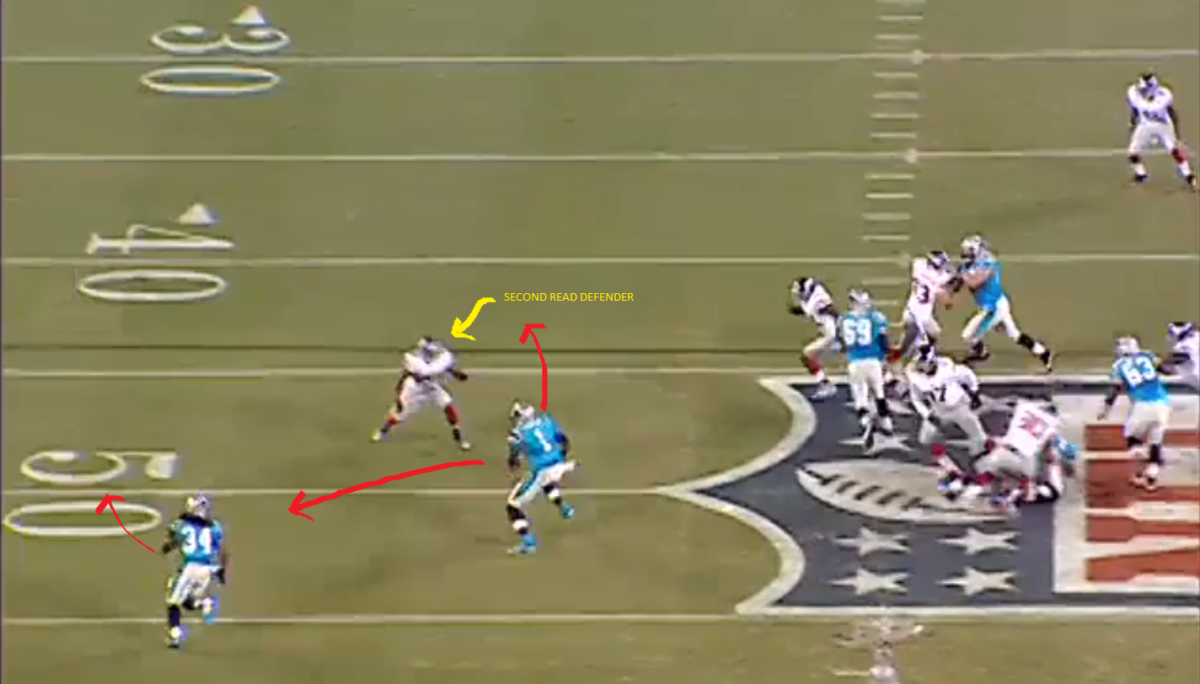
On this play against the Giants, the defender steps inside to take away the Newton keeper and so Newton is able to toss the ball to Williams in acres of space for the long gain. As with the read option, this concept can be run from a variety of formations and, using motions, can be disguised to a reasonable degree pre-snap.
One thing that should be noted is that the Panthers have used Alex Armah as the first running back at times during the offseason, which allows for a downhill power run or play-action from the same formation, thereby making it harder to identify the triple option pre-snap. If the Panthers feel comfortable with CJ Anderson as a lead blocker, then he is another player whose direct powerful running style would be suited to that role. Christian McCaffrey, with his ability in the open field, is a natural fit as the pitch option, with Curtis Samuel and DJ Moore also being possibilities out of motion. What could also be in the cards, however, is the possibility of an extension of the option offense beyond the read and triple options.
Above and Beyond
Often when people think of option offenses, they imagine Chip Kelly’s Oregon offense or even the mutated football played by Georgia Tech, but nobody has been more effective using the option offense than Gus Mulzhan’s Auburn. What Auburn does so well is the way in which they look to disguise their version of the triple option, the core of which is shown below:
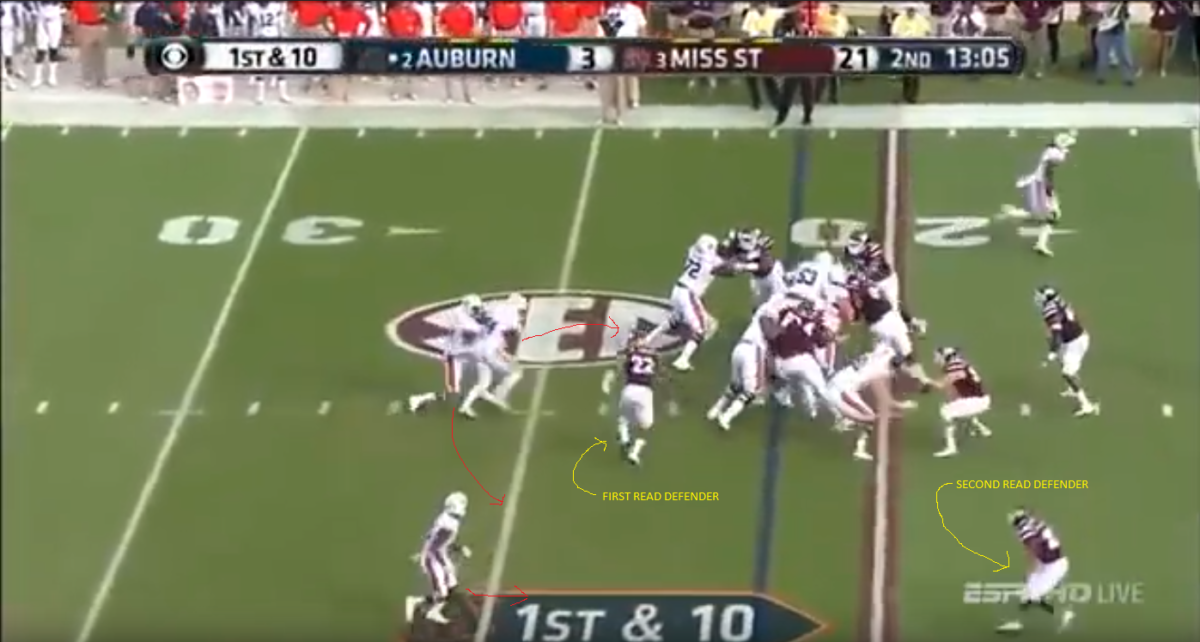
As with the option plays shown above, the edge defender is the first read, with the slot bubble screen being the second. Here, the edge defender looks to crash the run, allowing the quarterback to pull the ball and run outside. As with the other plays, all of the blocks look to drive the defenders away from the read side of the play.
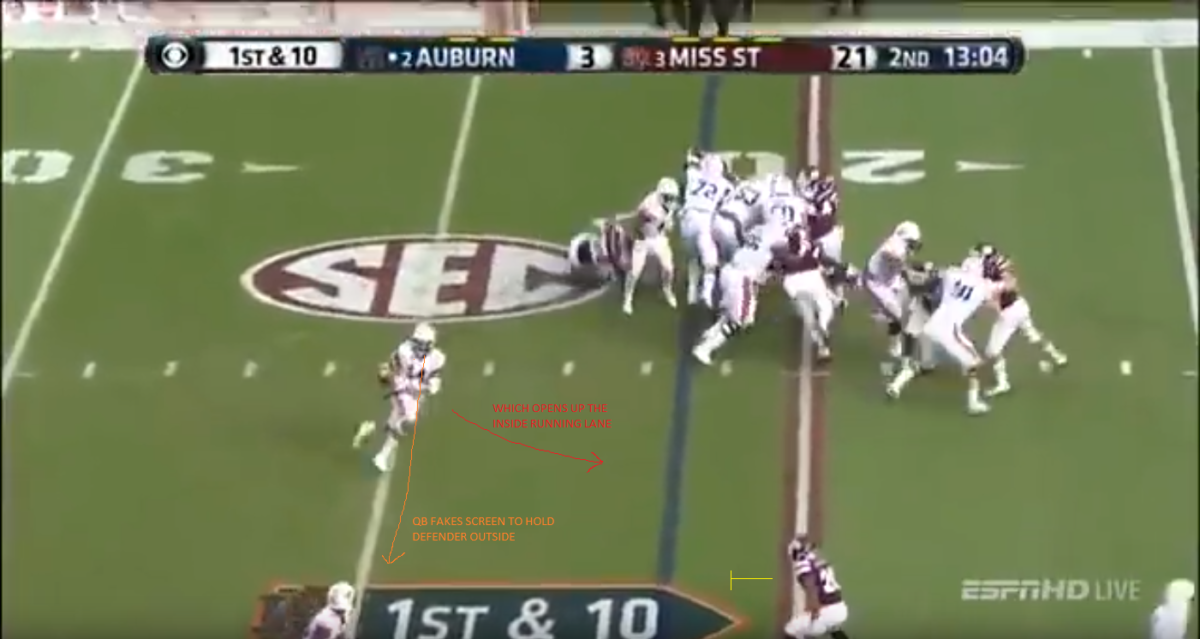
With the nickel then taking away the screen, the quarterback is able to keep the ball with plenty of space to run into – Auburn often used the outside receiver on a go or deep post route to force the outside corner up the field creating more space for the read; while teams always need to be careful about not getting caught blocking too far downfield, this can then lead to a fourth option should the outside corner look to take away the screen. This can be seen on the following play:
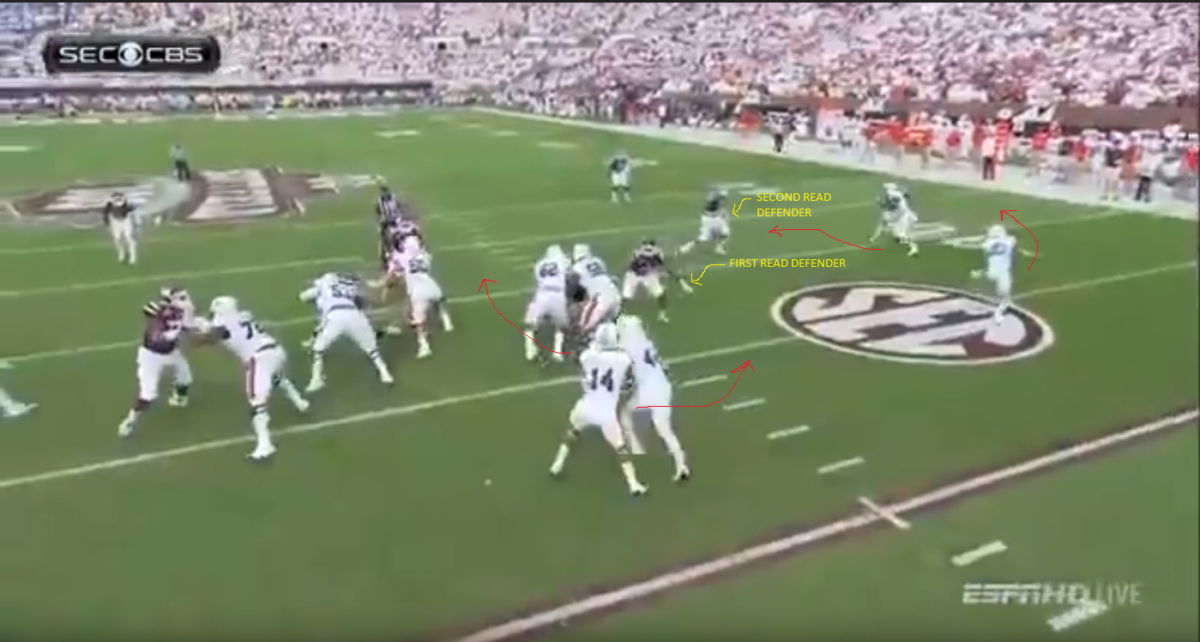
Here, the first read defender hesitates, and so the quarterback should hand the ball off with plenty of running room over right guard, but if the read defender crashes the inside run and the quarterback pulls the ball, the outside post offers a fourth option if the two corners look to take away both the screen and the quarterback keeper.
The Auburn offense was able to ride this option attack to a national title game appearance in 2013, and while in the NFL, it cannot be the basis for an entire offense in the same way, this option-based rushing attack takes pressure off the offensive line to create a push in the run game and uses the threat of Newton rushing to create space for the other ballcarriers, and that’s not even beginning to examine the potential extension to run-pass options. With the number of players the Panthers have who can make plays with the ball in their hand at running back, wide receiver and quarterback, the option offense can be seen as not just a gimmick, but a major building block of a successful running game in Carolina.

